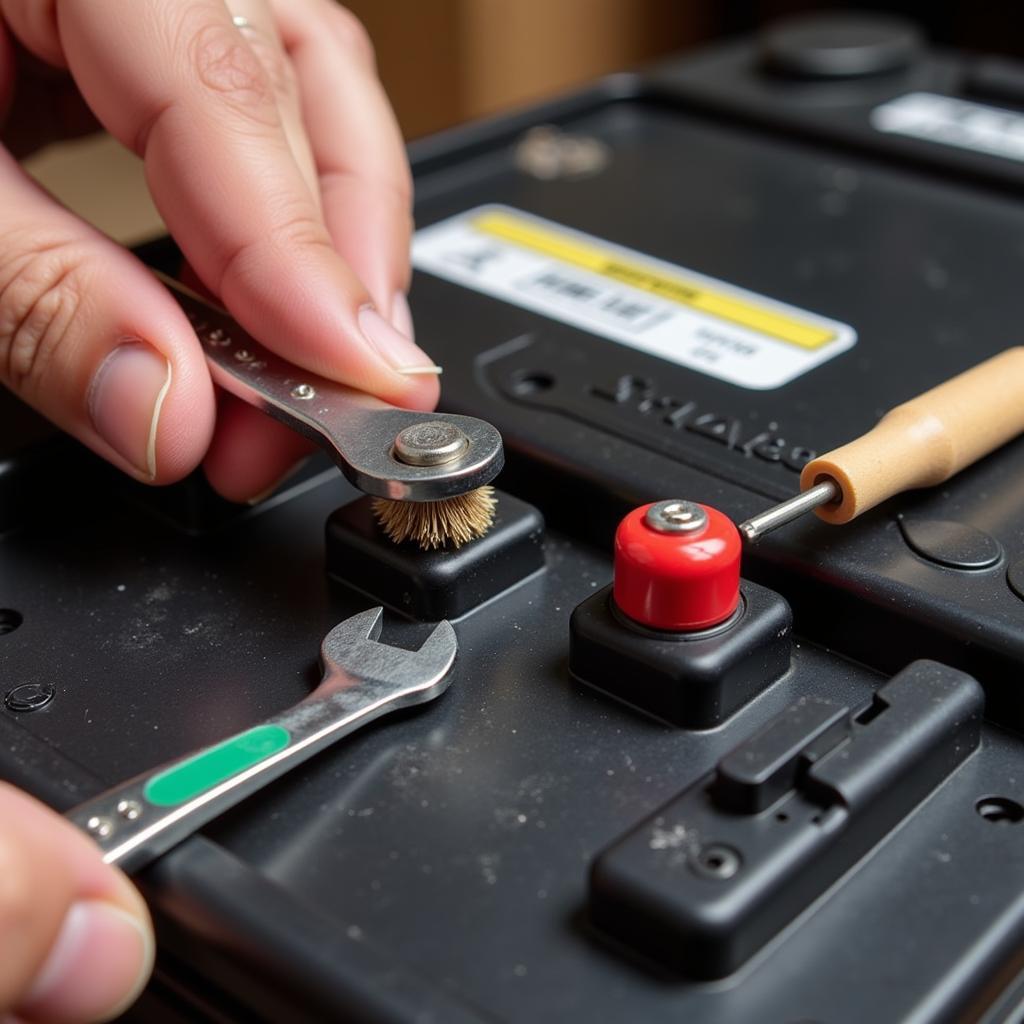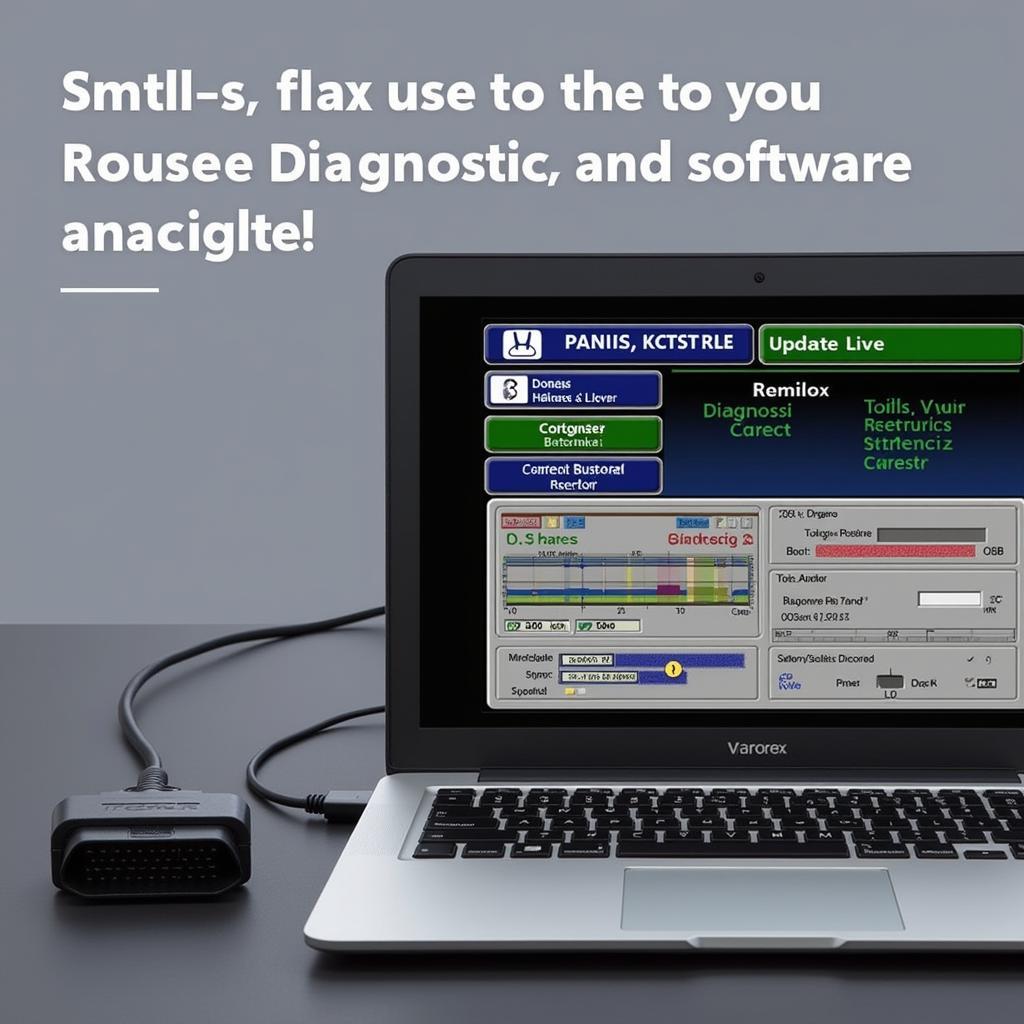My battery dead? This frustrating scenario is all too common for car owners. Whether you’re rushing to work or heading out for a weekend trip, a dead car battery can bring your plans to a screeching halt. But don’t despair, understanding why your battery died and knowing how to address the issue can get you back on the road quickly.
One of the most common reasons for a dead battery is simply age. Car batteries typically last between three and five years. Over time, the chemical reactions within the battery become less efficient, leading to a reduced ability to hold a charge. Extreme temperatures, both hot and cold, can also accelerate this process.
Why is My Battery Dead? Common Culprits
So, you’ve walked out to your car, turned the key, and…nothing. “My battery dead” echoes in your mind. But why? Several factors can contribute to a dead battery:
- Leaving lights on: This classic mistake is easily overlooked, especially with interior lights or headlights left on overnight.
- Parasitic drain: Even when your car is off, certain systems like the clock, radio, and security system still draw a small amount of power. A malfunctioning component can cause excessive drain, leading to a dead battery.
- Corroded terminals: Corrosion on the battery terminals can disrupt the flow of electricity, preventing the battery from charging properly and eventually leading to a dead battery.
- Short trips: Continuously driving short distances without giving the alternator enough time to fully recharge the battery can also lead to a dead battery.
- Extreme temperatures: As mentioned earlier, both extreme heat and cold can significantly impact battery performance and lifespan.
 Cleaning car battery corrosion with a wire brush and baking soda solution
Cleaning car battery corrosion with a wire brush and baking soda solution
Jump-Starting Your Car: A Step-by-Step Guide
If your battery is dead, jump-starting it is often the quickest solution. Here’s a step-by-step guide:
- Gather your supplies: You’ll need jumper cables and another vehicle with a working battery.
- Position the vehicles: Park the working vehicle close enough to yours so the jumper cables can reach both batteries, but ensure the vehicles aren’t touching.
- Attach the cables: Connect the red (positive) clamp to the positive terminal of your dead battery. Then, connect the other red clamp to the positive terminal of the working battery. Next, connect the black (negative) clamp to the negative terminal of the working battery. Finally, connect the other black clamp to a metal ground on your car, away from the battery.
- Start the working vehicle: Let the engine run for a few minutes to charge your dead battery.
- Start your vehicle: Attempt to start your car. If it starts, carefully disconnect the cables in the reverse order of how you connected them.
- Drive for at least 30 minutes: This will allow your alternator to recharge the battery. If you need a replacement, consider checking out services like key fob replacement nearby.
Need a new key fob? Check out fob key programming near me.
Preventing a Dead Battery: Proactive Measures
Dealing with a dead battery is never fun, but taking a few preventative steps can significantly reduce the risk:
- Regularly check your battery: Inspect the terminals for corrosion and clean them as needed. Consider having your battery tested by a professional every six months, especially during extreme temperature changes.
- Turn off all lights: Double-check that all lights, both inside and outside, are turned off before leaving your car.
- Limit short trips: If possible, combine short trips into longer ones to give your alternator ample time to recharge the battery. You can even check locksmith key fob near me for further assistance.
“Regular battery maintenance is crucial for avoiding unexpected breakdowns,” advises John Smith, ASE Certified Master Technician. “A simple voltage check can often predict potential battery issues before they leave you stranded.” Another expert, Jane Doe, Automotive Electrical Engineer, adds, “Modern vehicles have complex electrical systems, so a professional diagnosis is essential for pinpointing parasitic drains and other hidden issues that can drain your battery.” If you’re thinking of replacing your car key entirely, researching replacement car keys and fobs might prove helpful.
Conclusion
A dead battery can be a major inconvenience, but understanding the causes and taking preventative measures can keep you moving. Remember to regularly check your battery, turn off all lights, and limit short trips. If your battery does die, knowing how to jump-start your car can be a lifesaver. And for all your key fob programming needs, explore key fob program. Don’t let a dead battery ruin your day – be prepared and stay on the road!



